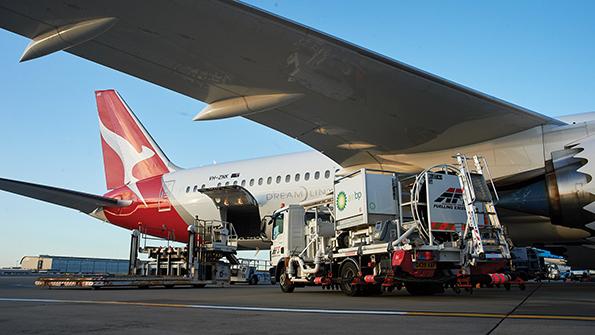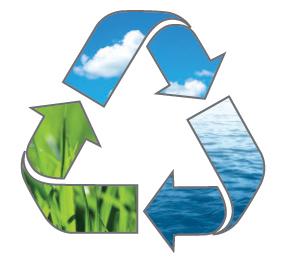
Airlines worldwide continue to invest in the development of sustainable aviation fuel, but that investment alone is insufficient to bring its production to a necessary scale without government incentives.
The International Air Transport Association (IATA) has estimated that airlines globally have entered into roughly $17 billon of forward-purchasing agreements for sustainable aviation fuel (SAF).
On the sidelines of IATA’s Annual General Meeting (AGM) June 19-21, in Doha, Qatar, Qantas and Airbus signed an agreement to jointly invest in the Australian SAF industry. The companies have agreed to provide up to $200 million to accelerate the production of SAF in Australia, and Pratt & Whitney will also contribute to the fund. Qantas has set as a target using 10% SAF in its overall fuel consumption by 2030.
- Qantas is latest carrier to invest in the sustainable aviation fuel industry
- Projects need more global diversification
Qantas could potentially provide equity investment to companies with good ideas to support SAF production in Australia, CEO Alan Joyce said during the announcement of the partnership.
“We’re so convinced of the potential of this that we think it could be a good business investment,” Joyce said. “This is not money that just disappears, and [an equity stake] could be worth more in the future.”

The airline hopes to use locally produced fuel to help meet its long-term SAF targets, noting that Australia currently exports millions of tons of renewable fuel feedstock every year due to a lack of large-scale local production.
Although there are numerous projects and commitments in countries worldwide to develop SAF, those undertakings are largely concentrated in Europe and the U.S. Speaking during the AGM, Sebastian Mikosz, IATA senior vice president of environment and sustainability, said no SAF projects exist in Africa, and there is only a single project in Latin America, in Paraguay.
IATA has stressed to Latin American governments the need to create incentives for investment in SAF, said Peter Cerda, the association’s regional vice president for the Americas, who also spoke at the event. He noted that it will not help the industry in the region when operators from North America and Europe operate SAF flights into Latin America but cannot operate with SAF on their return flights.
Qantas said that the airline and its partners want to support Australian SAF production and feedstock initiatives, provided they are commercially viable and meet sustainability requirements.
“If we want all of our airlines, which [number] 290, to have access to SAF, we need to give them the freedom to buy SAF anyplace in the world,” Mikosz said. And that SAF must be recognized where those operators report emissions, “without the need of carrying SAF all around the planet,” he added.
IATA has stated that SAF production needs to increase to 449 billion liters (120 billion gal.) in 2050 to meet the industry’s goal of net-zero carbon emissions, from roughly 100 million liters annually in 2021.
The association has calculated that by 2030, with effective government incentives similar to those offered to renewable energy providers, approximately 30 billion liters of SAF could be produced annually, versus current projections of 23 billion.
“We don’t want to get money from governments,” Mikosz explained. “But we want to convince governments that they should incentivize producers, existing and new producers, to come into the market.”
Qantas and its partners hope their new initiative will encourage other stakeholders to invest in the Australian SAF industry.
Joyce said another important element is for the Australian government to provide the necessary policy framework to support a SAF industry. The airline has had “good dialog” with the newly elected Australian government on what this policy framework should look like, Joyce said. “We are pleased with the progress we are making,” with the government, he added.
IATA notes that 38 countries have a formal SAF policy, and the hope is a global agreement will be in place by 2025.
The association is encouraged by a proposal from the Biden administration that would provide tax credits for SAF producers. Mandates, on the other hand, are more difficult, given the supply of SAF. “It’s very difficult,” Mikosz said. “It just puts pressure on cost and not pressure on investment.”
The EU’s “Fit for 55” emission-reduction plan includes a mandate for the use of SAF.
“The recognition of the importance of SAF in the Fit for 55 initiative is welcome,” Rafael Schvartzman, IATA vice president for Europe, said earlier this year. “But it doesn’t make sense to propose that SAF must be delivered at almost every airport in Europe. A more flexible booking-claim system would enable airlines to purchase SAF where it is most economically efficient.”
On a more practical level, such differing approaches could cause logistical headaches for airlines. “You need a level playing field,” Katja Kleffmann, head of fuel management supply for Lufthansa Group, said at the AGM. “You need the same policies.”
Joining Kleffmann during a discussion about SAF, Alder Fuels CEO Bryan Sherbacow said that California’s Low-Carbon Fuel Standard is the most effective decarbonization policy. “It’s technology-agnostic, but it’s actually fuel-type-agnostic. It’s essentially focusing on the ultimate goal, which is decarbonization,” he noted.
“The greater the decarbonization, the more monetization opportunity,” Sherbacow said, which could attract entrepreneurs and produce returns for investors. “If we think about replicating policy that creates carbon markets that are fuel-type-agnostic, you’re going to get better outcomes,” he said.
Even as the industry continues its push for governments to create incentives for SAF infrastructure and production, progress is being made. IATA stated that by 2025, more than 10 plants could come online with a capacity to produce 5 billion liters annually, which is 50 times what was available in the market in 2021.
The association also predicts that by 2025 there also will be 11 technical pathways approved for SAF production, compared with the seven currently approved.
Sherbacow said he is encouraged by the progress so far. “[That includes] the understanding of the need to increase SAF use, the incentives that are happening as a result of that, the investments being made and the outcomes we are seeing in the marketplace,” he said.
The main goal now, Sherbacow said, “[is to] keep yelling as loud as we can to policymakers—we need them to help us” achieve industry SAF goals.
SAF represents 65% of IATA members’ commitment to reaching net-zero emissions by 2050, which will require buy-in from governments, and perhaps a few yells, for years to come.



